Average sizes and life expectancy for this breed:
Originating from the Congo, Basenjis were used as both sight and scent hounds to drive small game into hunters’ nets. They also controlled and managed rodent populations. These dogs are often referred to as “barkless” dogs because they make a unique yodel sound instead of the traditional dog bark.
Basenjis are known to be ultra-clean dogs. So, they are often considered to be more cat-like than dog-like. They will spend many hours cleaning themselves any time they have dirt on their coats. Moreover, they use their paws to clean themselves, and because of this, they don’t have any sort of "doggy” smell to them.
The Basenji is a medium-sized dog breed that boasts an endearing look and poised gait. They are friendly, curious, confident, and intelligent, making them great canine companions. Basenjis form deep, close bonds with their families; however, they tend to bond more with one person in particular. Over the years, these endearing dogs have become one of the most popular choices as family pets in Europe.
These active dogs can adapt to apartment living and can be a match for first-time dog owners. Just make sure to provide sufficient physical and mental stimulation.
See available puppies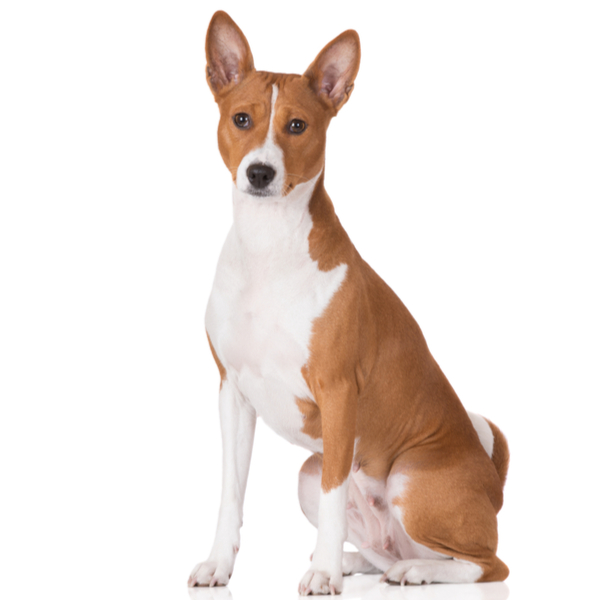

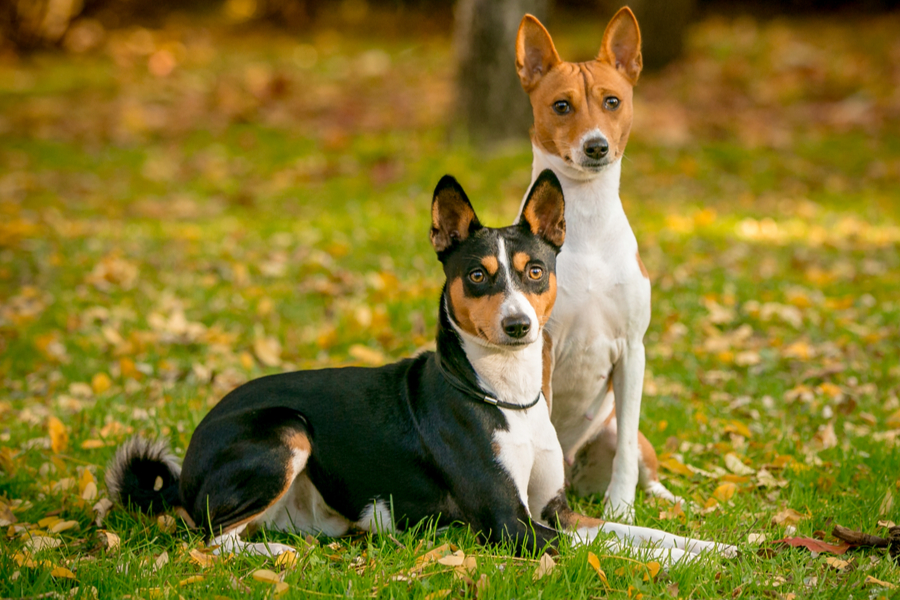


The Basenji breed is believed to have been around for a very long time. There are wall paintings and engravings in Ancient Egyptian Pharaoh tombs that depict very similar-looking dogs. They were also depicted in Mesopotamian and Babylonian artwork.
However, in the 17th century, they were also found in the Congo, where they were highly prized for their scenting skills. An explorer named Merolla found Basenjis in 1682 when he was travelling in the Congo. In many African countries, they were often referred to as “the jumping up and down dog” or M’bwa M’kube M’bwawamwitu.
In 1880, a picture was taken at the Zoological Gardens in Paris showing three dogs that were imported to France from the Congo. These dogs looked similar to the Basenji and the breed profile that was written at that time is very similar to the breed standard of the Basenji today. However, despite their rise in popularity, attempted imports to the United Kingdom repeatedly failed due to the prevalence of canine distemper. The first Basenjis (known as Congo Terriers or African Bush Dogs at the time) to be exhibited at Crufts in 1895 all died of the disease.
Then, finally, in the 1930s, Mrs. Olivia Burns imported a male Basenji called Bongo of Blean, and two females, which become the foundation of the breed in the United Kingdom. In 1936, they produced their first litter, and the following year their puppies were exhibited for the first time at Crufts.
In 1939, the first Basenji Club in the United Kingdom was established, and more individuals were imported into the country. However, the effects of the Second World War interrupted the breed’s growing development. It was a lady called Miss Veronia Tudor-Williams that kept the breed alive until the war ended.
Two Basenjis were imported to America in 1937. These dogs, Bakuma and Basashi, caught the attention of early fanciers Mr. and Mrs. Al Phemister who began breeding them. Bakuma sired the very first Basenji American Kennel Club Champion, Melengo, who won the title in 1945.
The name Basenji was finally coined in the 1930s. Translated to English, the name means ‘bush thing’. In Swahili, the name means ‘wild and violent’
Nowadays, the endearing Basenjis are still used as hunting dogs in many African countries. They also have a big fanbase in the United Kingdom and across the world because of their sweet personalities and unique vocalisations.
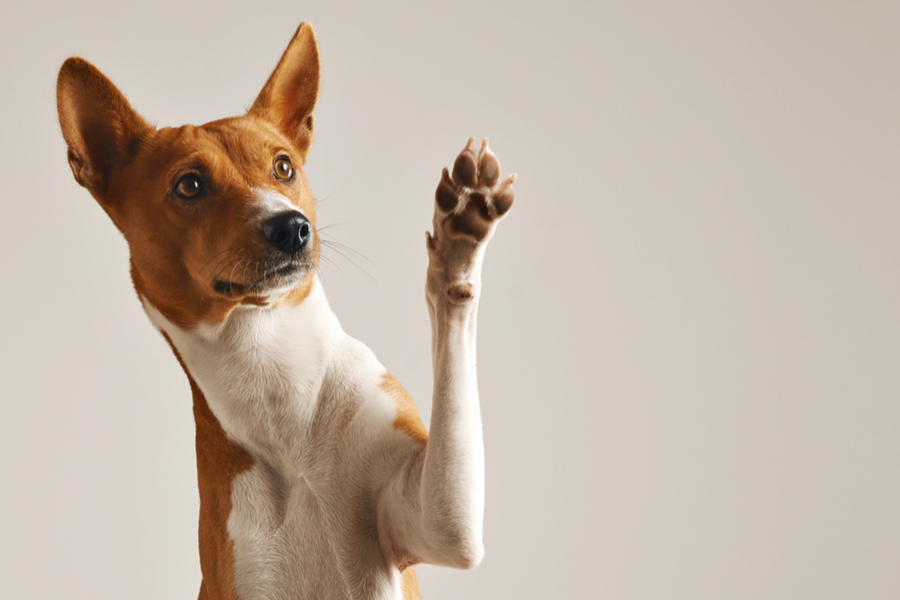
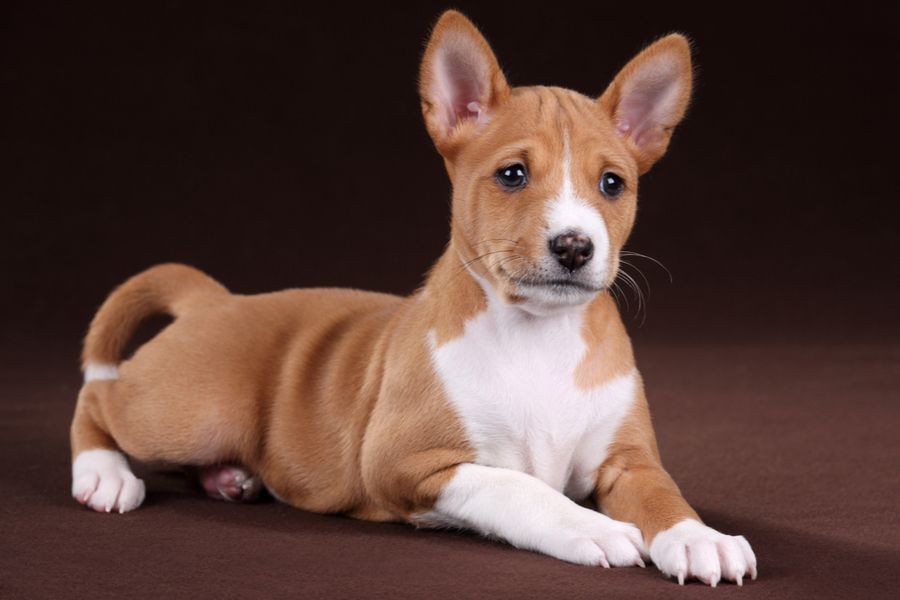
Basenjis are medium-sized dogs. They are fine-boned and boast a gallant and graceful appearance. These dogs are always alert and ready. Basenjis have an intelligent and sweet look about them, with wrinkles on their eyebrows that add to their general appeal.
They have well-proportioned and well-chiselled heads. As the Basenji pricks their ears, endearing wrinkles appear on their foreheads, giving them a quizzical expression. These wrinkles are more prominent when they are puppies but can still be seen in adults.
Their small, pointed ears stand erect and are slightly hooded. They are placed well-forward on their heads. Their mouths are strong and boast a perfect bite. Their arched necks are very strong and set well into the chest.
Their forequarters are strong with well-laid-back shoulders and long, well-boned front legs. When viewed from the front, the Basenji’s elbows sit in line with the ribs. Their well-proportioned body is muscled with a shortish, level back over their well-sprung ribs. They have deep briskets that run cleanly into their well-defined waist.
Their powerful hindquarters are strong looking with long seconds thighs. Their back legs give them the impression that they are ready to sprint off after their prey. They have neat feet that are compact and narrow with well-arched toes and short nails. Tails are carried well over their backs, whether in a single or double curl.
The Basenji’s coat is very short, fine, and sleek. Colours vary but can include black tan and white, black and white, brindle and white, red and white, and black.
Any white colour should be on their feet, chest, and tips of their tails. Some dogs may also have white legs or a white blaze and white collar, which is acceptable as a breed standard.
Basenjis are very friendly and affectionate towards their families; however, they can be somewhat aloof toward strangers. They tend to form strong bonds with one particular person in the household, but all in all, they are very loving to all members of the family.
In Africa, these dogs are highly prized for their exceptional hunting skills. So, they have a naturally high prey drive and an independent and free-spirited nature.
Basenjis are very active dogs so they must be kept busy, both physically and mentally. Long periods of exercise in a securely fenced yard or out on a leash daily are required for this breed. Do not let a Basenji off the lead in wide open spaces because their strong hunting instinct can cause them to shoot off if something catches their interest. This is especially important if there is grazing livestock nearby.
Basenjis should never be left alone for long periods as boredom can kick in quickly. Furthermore, these energetic dogs are good escape artists because they can easily jump over high fences and hedges. It’s also worth noting that this breed does not like water, just like cats!
Basenjis can be a good choice for novice dog owners. Just make sure that you can provide ample time to dedicate to this intelligent and energetic breed.
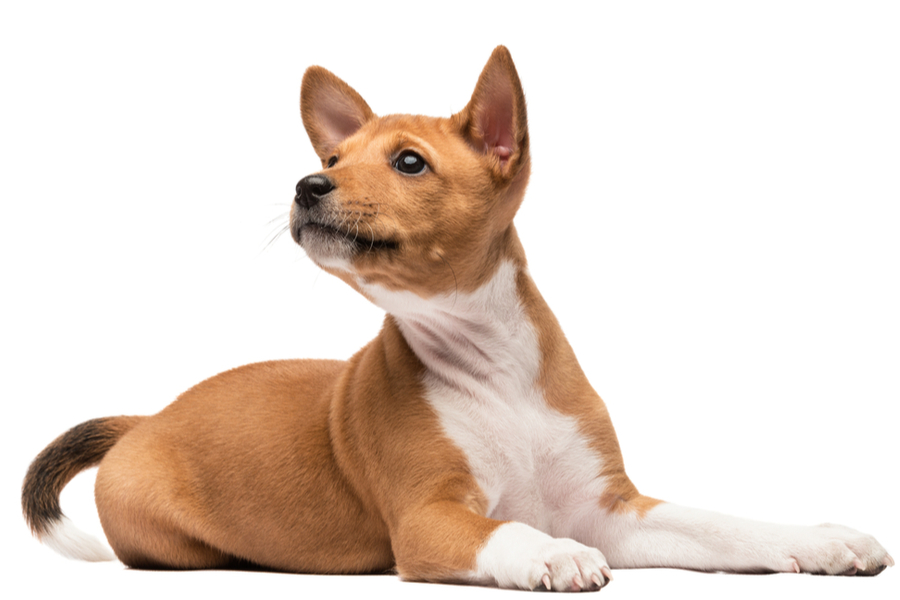
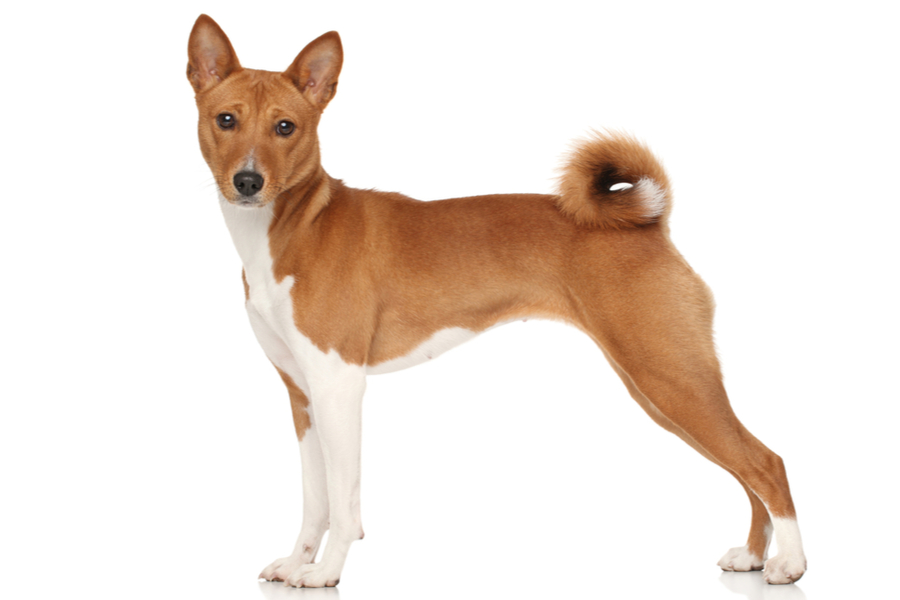
These dogs are high-spirited and clever. However, they are notoriously difficult to train. These dogs have a stubborn streak thanks to their independent natures, and they are no pushover when it comes to obedience. For this reason, Basenji’s training and socialization must start as early as possible, with a lot of patience and understanding. Introduce them to many new situations, environments, people, and other animals when they are puppies. So, they grow up to become well-balanced, confident, and outgoing dogs.
These dogs can be sensitive. This, coupled with their independence, means they do not respond well to harsh training methods. Instead, use positive reinforcement and keep training sessions short. Remember, Basenji puppies do not forget if they have any bad experiences during their training. So, make sure that you exercise great care when training Basenji puppies.
Known for their cat-like grooming habits, Basenjis keep themselves incredibly clean. This makes them very low maintenance on the grooming front. A weekly groom with a slicker or bristle brush is all that’s needed for this breed. They also don’t need bathing more than once every few months. These dogs do shed, but it is so short and fine that it’s not as noticeable as other dogs' shedding fur.
Daily dental hygiene is best to avoid tooth and gum diseases and bad breath. Ask for advice from your veterinarian on which dental products work best to clean their teeth, gums, tongue, and mouth.
Trim their nails once or twice a month (or as needed) to keep them tidy and in good condition. Make sure you do this often to avoid very long nails because this can be unpleasant for your Basenji. While you trim their nails, check their paw pads are injury and dirt free.
Regularly examine your Basenji’s ears for dirt and wax build-up. You can wipe their ears using a moistened cotton ball with an ear cleanser recommended by your veterinarian. Remember never to use cotton swabs within their ear canals because this can injure them. If you detect any foul smell, inflammation, soreness, or swelling, in one or both of their ears, book your dog in for a vet check-up as these are common signs of infection.
While grooming, it’s a good idea to examine your dog’s body for any rashes, inflammations, wounds, and other signs that may suggest an underlying health condition. Their eyes must be healthy and clear without soreness, redness, or discharge.
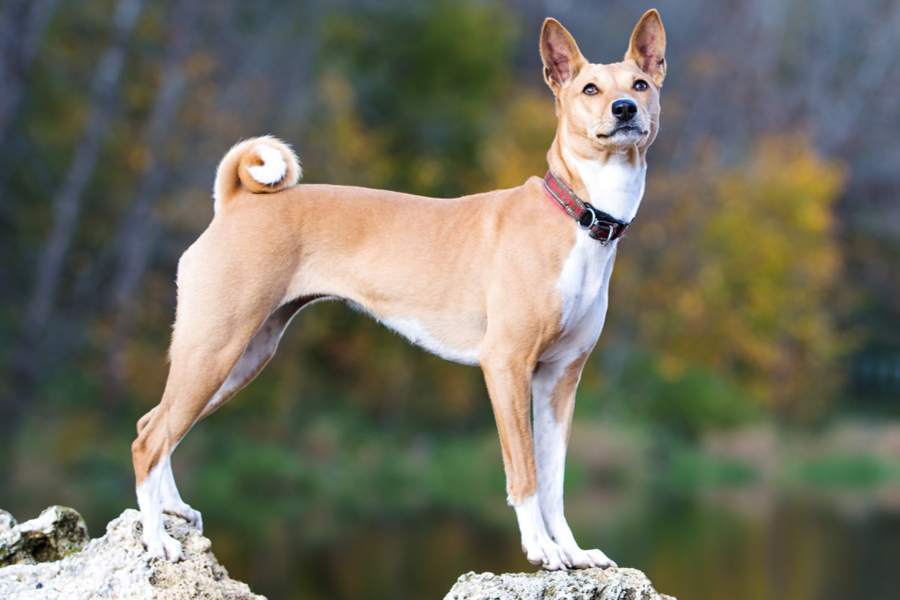
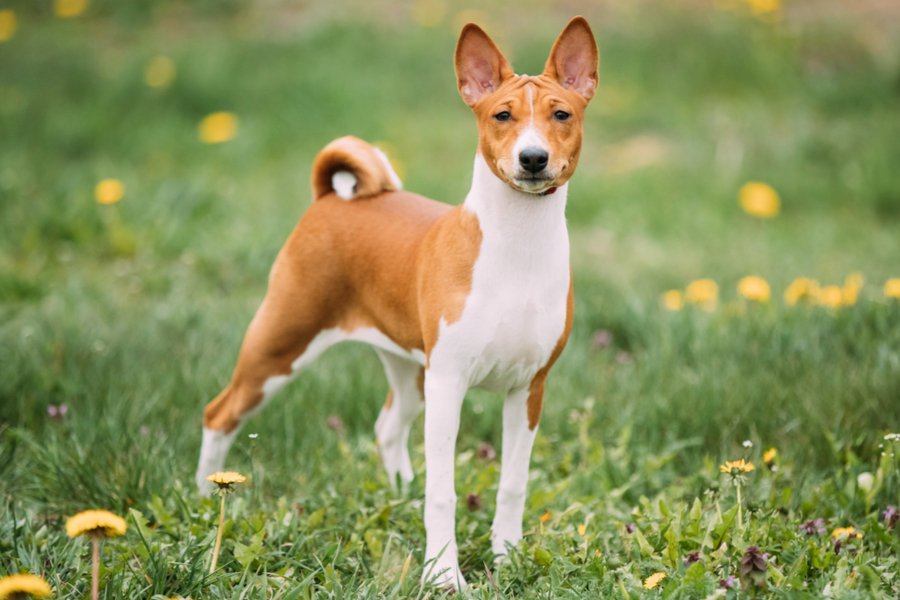
Basenjis can live long, healthy lives as long as they are provided with enough stimulation, care, and a high-quality diet that is tailored to their unique needs. Proper socialization is essential for this breed so always make sure you purchase a puppy from a reputable breeder. They will also be able to perform DNA tests on your puppy and its parents to ensure there are no underlying health issues present.
These energetic dogs are known to be a healthy breed. However, the Basenjis can have some of these health conditions listed below:
Basenjis make good pets for families with older children because of their rambunctious and energetic natures. Young children may struggle to interact with these playful dogs and may get knocked over in the process. However, with that said, it’s best to supervise all interactions between any child and a Basenji to avoid accidents or injury.
Basenjis can get along well with other dogs, but they can be argumentative at times. It’s not advisable to leave a Basenji alone with smaller animals because of their high prey drives.
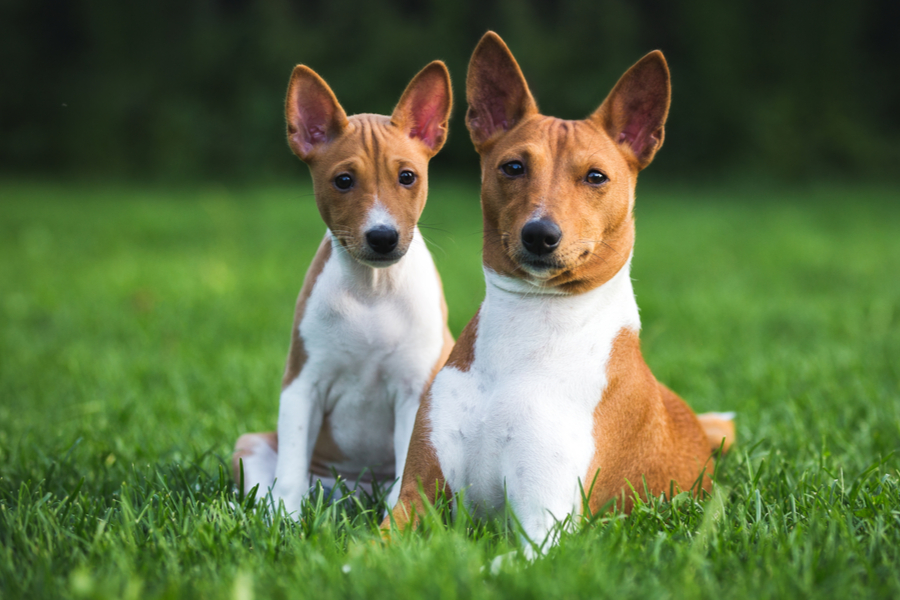

We can connect you with Breeders that are specialized in this particular breed.
See available puppies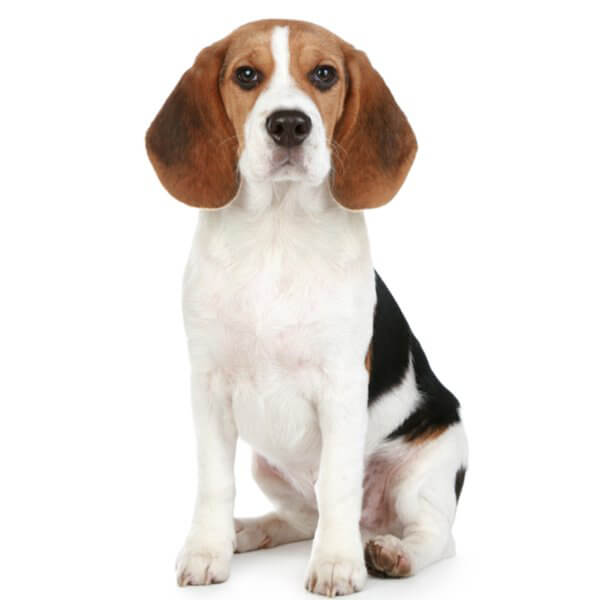
United Kingdom
Size : Medium
Coat : Short
Registration : KC, FCI, AKC
Exercise : 1 hour
Training : Medium
Grooming : Twice a Week
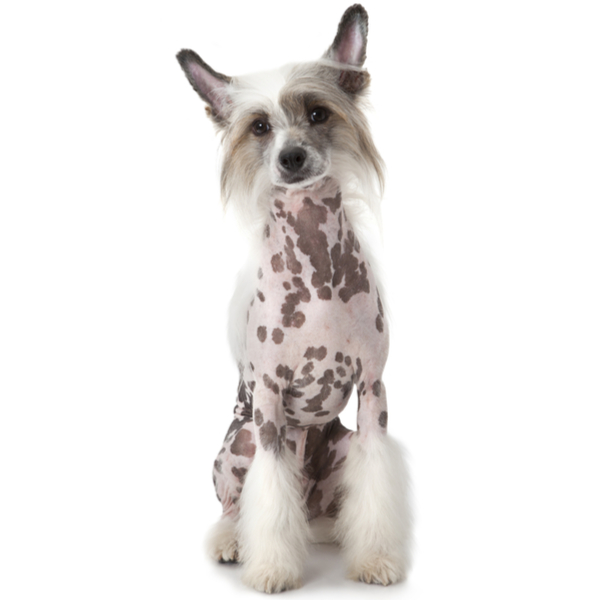
China
Size : Small
Coat : Short
Registration : KC, FCI, AKC
Exercise : 30 minutes
Training : Medium
Grooming : Once a Week
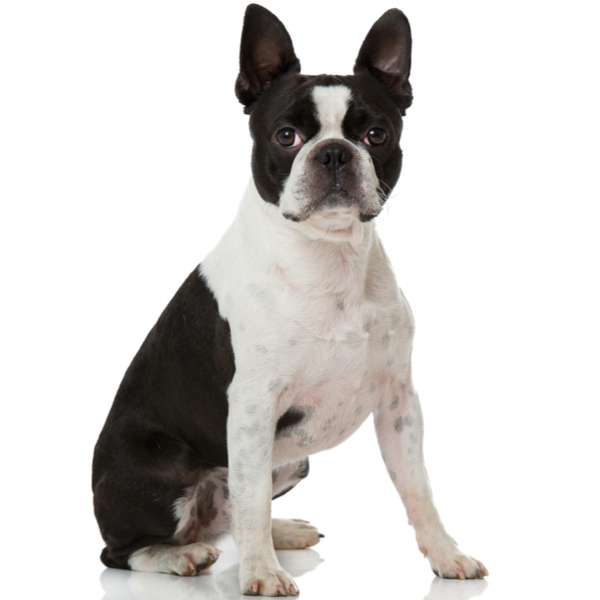
United States of America
Size : Medium
Coat : Short
Registration : KC, FCI, AKC
Exercise : 1 hour
Training : Easy
Grooming : Once a Week
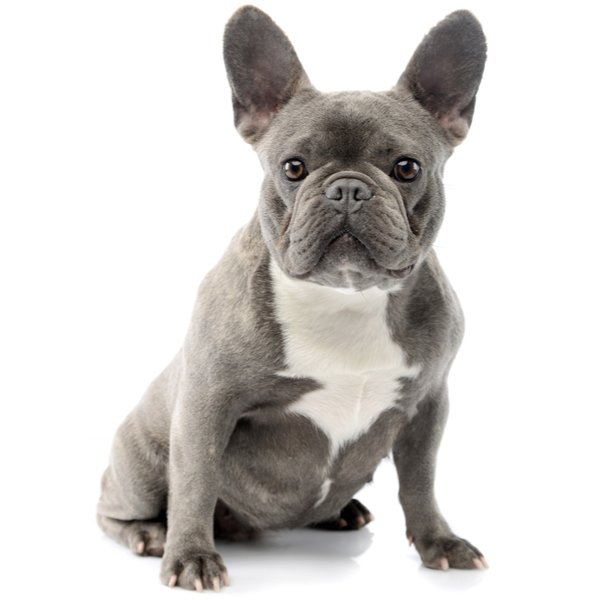
France
Size : Medium
Coat : Short
Registration : KC, FCI, AKC
Exercise : 30 minutes
Training : Medium
Grooming : Once a Week


Need some advice?
Whether you're a first time pet owner, an experienced pet owner, a new or long-time breeder, or just curious about pets, we've got you covered!

January 17, 2024
What Is The Personality Of Russian Blue Cats?
Russian Blue cats are most known for their distinctive shimmery blue-silver coat and piercing green eyes. However, this breed’s calm and gentle temperament is what makes them shine the most in the feline world.

January 17, 2024
10 Facts About Russian Blue Cat Breed
Russian Blues are one of the most aesthetically stunning cat breeds, with a gorgeous plush silvery coat and vibrant green eyes. However, it’s not only their appearance that is beautiful; their nature is too.

January 17, 2024
How To Choose The Right Cat Breed for You
Cats can make the most fantastic animal companions; they are adorable, friendly, and loving. However, not all felines are created equal. There are many different breeds, of which each has its unique personality traits.
Need some help?
Contact us to speak to our friendly advisor, who will gladly help you find your dream pet!



We are registered in England and Wales under registration number 12568840,
and our registered office is at 58-60 Kensington Church Street, W8 4DB London, England.
© 2023 The Pedigree Paws